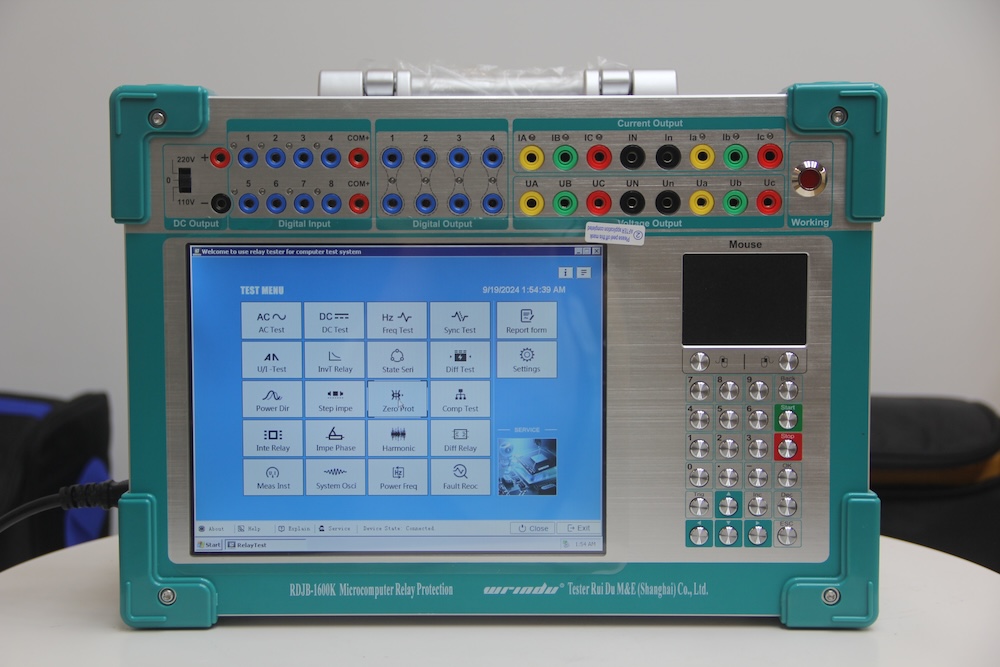The Impact of Aging Power Equipment on Relay Protection Testing
In power systems, equipment aging is a critical issue that cannot be overlooked, directly affecting the performance of relay protection devices and the overall safety of the system. As the operational lifespan of equipment increases, aging phenomena become more pronounced, leading to performance degradation, increased failure rates, and the potential inability of conventional tests to fully uncover latent problems. This article will delve into the impact of power equipment aging on relay protection testing and propose corresponding countermeasures.
Degradation of Equipment Performance
The primary effect of equipment aging is the gradual decline in performance, mainly manifested as follows:
Insulation Performance Decline: Insulating materials are subjected to electric fields, heat, and moisture over time, leading to a decrease in dielectric strength and insulation resistance, which increases the risk of electrical faults. Regular testing of insulation resistance values is crucial to timely identify potential insulation aging issues.
Mechanical Property Deterioration: Mechanical components in electromechanical relays and circuit breakers can wear out due to prolonged operation. Aging may result in poor contact, affecting operation time, which can lead to misoperation or delayed response, severely impacting the accuracy of relay protection.
Increased Contact Resistance: As equipment ages, contact resistance can significantly increase, impacting the response speed and sensitivity of relay protection devices, potentially leading to erroneous action judgments.
Increased Failure Rates
Aging of equipment is closely associated with rising failure rates. Data indicates that aging rates across different types of relays have increased. For example, the aging rate of electromechanical relays in equipment exceeding 20 years has risen from 62% to 67%, while the aging rate for solid-state relays in equipment over 15 years has significantly increased from 60% to 82%. This demonstrates that aging equipment is more prone to the following failures:
Increased Latent Failures: Aging equipment may harbor undetected latent failures, such as intermittent faults and internal connection issues, which are often difficult to identify in conventional testing.
Storage Chip Failures: Aging may lead to storage chip malfunctions, resulting in the inability to save critical data, thereby affecting fault analysis and decision-making.
Display Issues: For instance, the appearance of white stripes on displays may not initially affect usability, but over time, the impact may intensify and interfere with normal operations.
Limitations of Conventional Testing
While conventional relay protection testing can provide a certain assessment of equipment status, its limitations become increasingly evident in the face of aging equipment:
Difficulties in Uncovering Latent Issues: Conventional tests typically reflect the current status of equipment and may not fully reveal latent hidden faults, leading to situations where equipment appears normal during testing but may fail during actual operation.
Insufficient Test Sensitivity: In the testing process, conventional methods may not adequately adapt to the characteristic changes in aging equipment, resulting in less accurate test results.
Strategies for Addressing Aging Power Equipment
To effectively tackle the impacts of equipment aging, the following comprehensive strategies are recommended:
Regular Updates and Maintenance: For equipment that has reached its design life or is unstable, timely replacement or maintenance is essential to ensure system stability and safety.
Comprehensive Health Checks: Conduct regular comprehensive health checks based on the actual operational status of equipment, utilizing advanced monitoring technologies (such as infrared temperature measurement and vibration characteristic measurement) to assess equipment condition and ensure optimal operation.
Scientific Evaluation and Preventive Maintenance: Establish an equipment status assessment system, employing big data and machine learning technologies for trend analysis to predict potential failures and develop corresponding preventive maintenance strategies to enhance equipment reliability.
Online Monitoring Systems: Develop an online monitoring mechanism independent of automation systems to continuously extract performance parameters reflecting equipment health status, employing artificial intelligence methods for dynamic assessment.
The impact of aging power equipment on relay protection testing is profound and requires the attention of relevant engineers and technical personnel. Through regular health checks, scientific evaluations, and advanced monitoring methods, the risks associated with aging equipment can be effectively mitigated, ensuring the safe and stable operation of power systems. Only through comprehensive and systematic management measures can the relay protection system be relied upon to function effectively in an increasingly complex power environment, safeguarding the security and stability of power supply.





